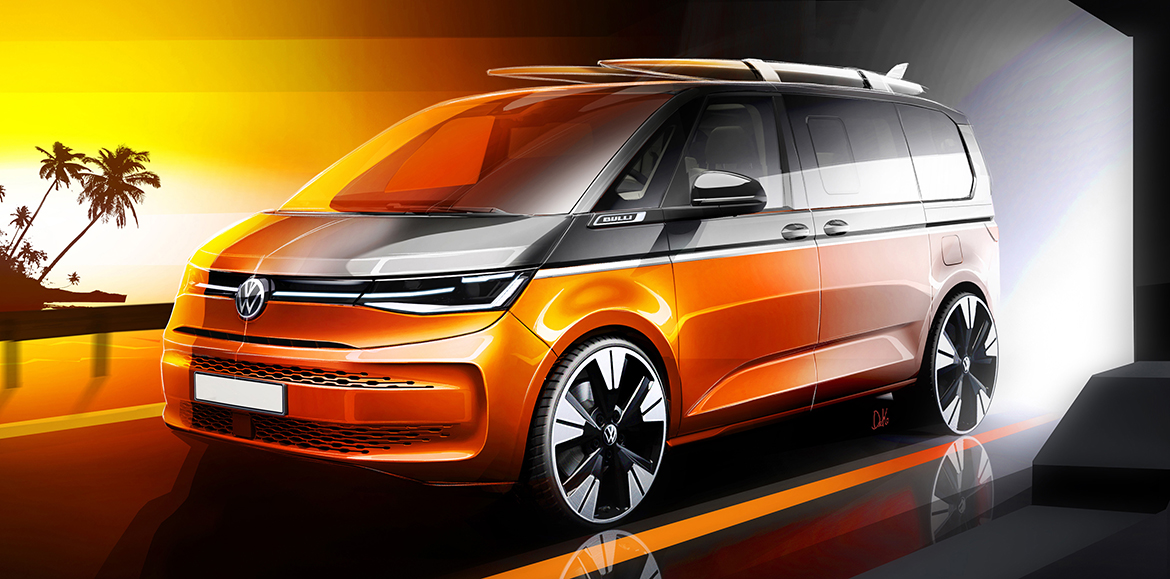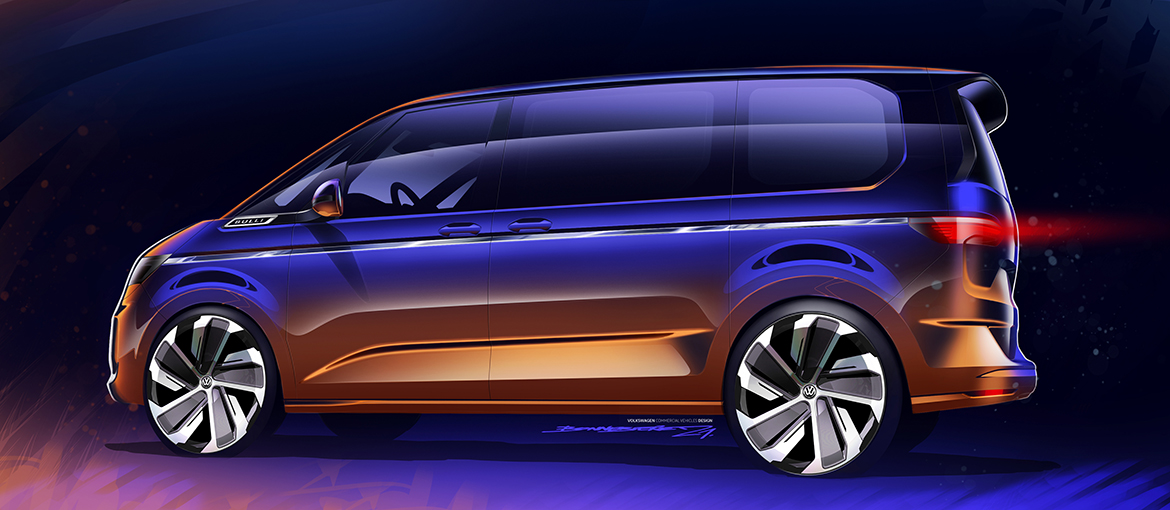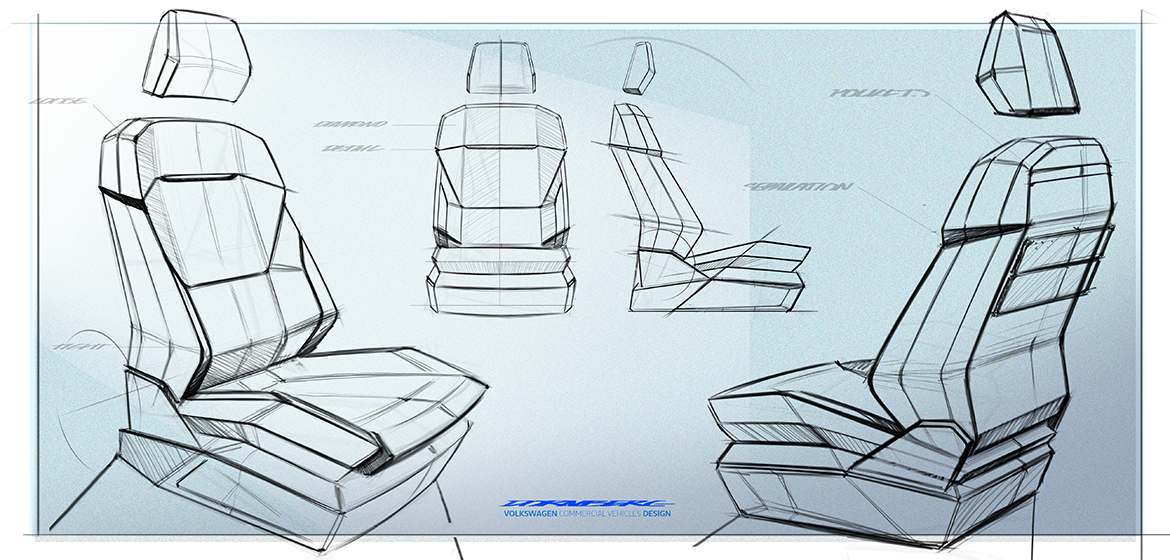The myth of Bulli (a fusion, in German, of the terms for bus and truck) has lasted for seventy years: since, that is, the Wolfsburg engineers welded a van body onto the floor of the Beetle. Refined generation after generation, it has now reached the seventh, with new challenges: the Multivan T7 – to use the official name – according to the designers of Volkswagen Commercial Vehicles throws down the gautlet also to the V-Class of Mercedes and aims to become the benchmark of people carriers.
“We wanted a timeless, quiet and relaxed design,” explains Max Gutbier, the senior exterior designer who took care of the shape: “Large surfaces, pleasant proportions, but also more sculpted shapes so that it did not have the appearance of a large box.” Hence the more angled A-pillar, the backward driver position thanks also to the use of the last generation of the MQB platform (Modularer Querbaukasten, for transverse front-wheel drive engines).
Markus Rudlof, also a senior exterior designer, echoes him: “T7 is more comfortable than the previous model, thanks also to the new suspension. It has a more dynamic and agile aspect.” It is 4.97 meters long (but there will also be a version with a rear overhang increased by 20 cm). With the seats folded down it has a load capacity that exceeds 4 m3, while a wheelbase of 3.12 m allows seven independent seats (the bench in the third row has been eliminated).
To maintain the character of the original Bulli, as Rudlof recalls, the four large wheels at the corners and the belt line dividing the minivan into two parts were essential. Quickly done: “An aluminium strip – explains Gutbier – starts from the front light clusters and runs along the side, also defining the line of the two-tone paint.” As in the previous model the front is horizontally developed: “The grille – Gutbier continues – is practically gone, because the cooling takes place at the bottom, and this allows for a nice clean design. Above all, it gives the vehicle, with its face and eyes higher, a friendly aspect, with a kind of smile from the line that connects the two headlights.”
The rear is also horizontally developed, for the first time with a rectangular theme for the lights. The first sketches date back to 2016; then the internal competition led to four clay models in 1:2.5 scale, reduced in June 2017 to two 1:1 models, one by Gutbier (who later prevailed) and one by Dennis Kosik. At the same time Jörg Hinkfoth was developing the interiors on an initial theme by Zdenek Borysek.
“We too – he explains – in a return to our origins have given a horizontal development to the dashboard, now divided into two parts by an aluminium strip (“The theme of the division is the same as the exterior,” says Gutbier). The lower part continues along the doors and on the sides, delimiting the two-tone.” The rails on the completely flat floor allow the movement of the seats, which in turn can be removed with a click. And there is a console that, when moved backwards, can be transformed into a coffee table. “A truly multipurpose Bulli,” is the verdict.
(Full article in A&D no. 250)
















